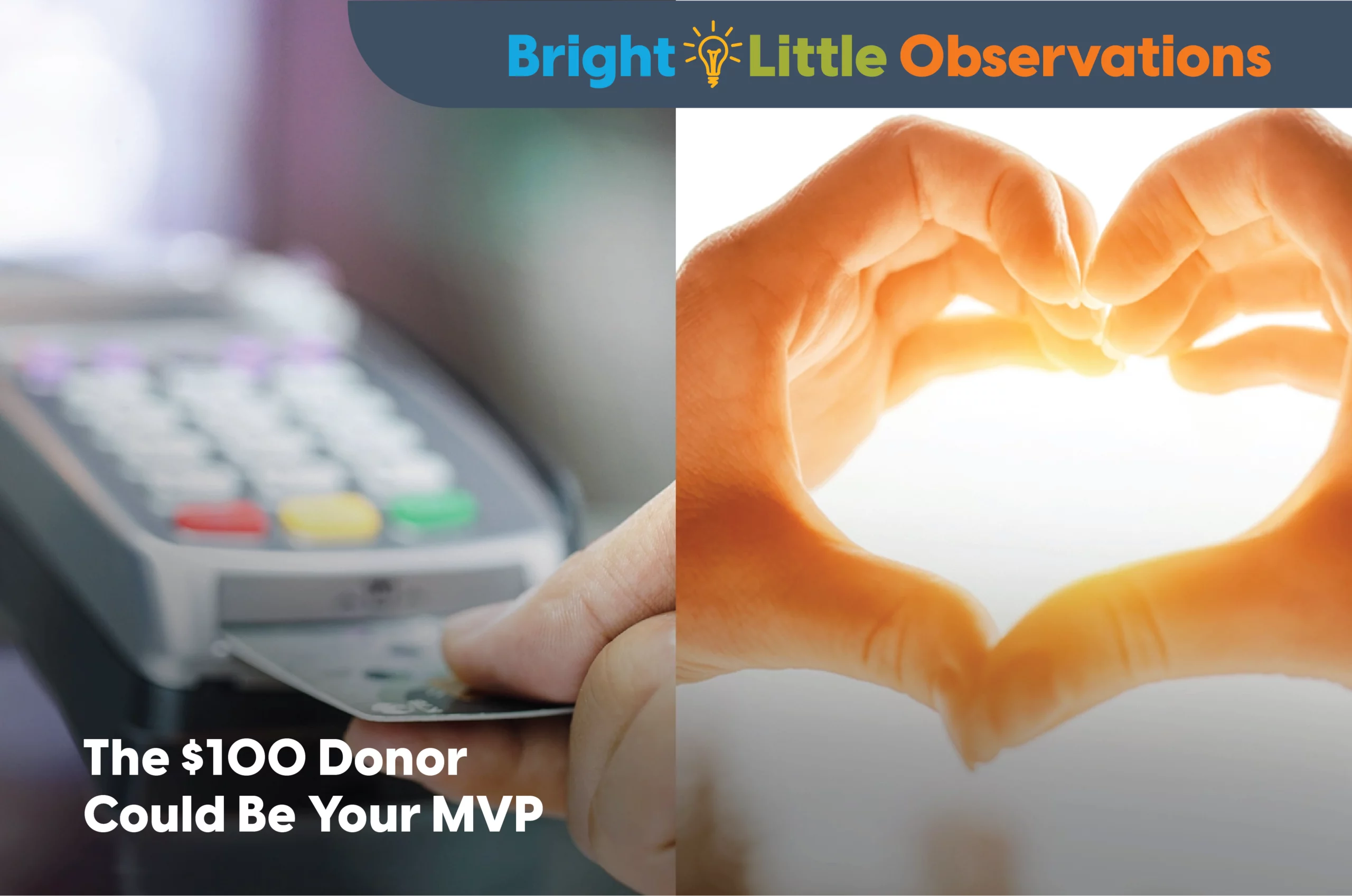


There’s a common misconception in nonprofit circles that casting a wide net for low-value donors or holding out for a few of those low-end donors to upgrade to high-value status will make for a successful acquisition strategy. Unfortunately, the data indicates that you’re baiting your lines for the wrong fish.
Our extensive experience with nonprofit, commercial and governmental clients, in addition to thorough research and analysis, has inspired us to create Summit SONAR® — a multidisciplinary set of strategic advantages that maximize profitability, foster positive donor lifetime value, increase retention and so much more. Over time, we’ve used our unique list strategy and understanding of nonprofit donors to develop successful programs, predict giving patterns and provide our clients with analysis-driven advice. Now, we’d like to share some of our findings with you.
Redistributing your balance.
You may be compelled to believe that growing and replenishing your donor base by pursuing smaller gifts is an effective marketing strategy. However, this can waste your time and resources, and waiting for low-value donors to give larger gifts could prove to be impractical and costly. Consider this — if it costs you more to acquire these donors than their average gift amount, you’re already in the hole from the start.
Our research found that donors who had an initial gift of less than $20 only had a 0.1% chance of upgrading their support to $500+ over a 10-year giving period. In comparison, donors who gave an initial gift of $100+ were 80 times more likely to upgrade to a $500+ gift.
Our recent analysis that indicates 50% of the under $20 first-time donors have not given again within three years, 37% give at least one more gift, but do not give a gift larger than $25, 2-3% give a gift greater than $100 and less than 1% a gift greater than $500. But, in aggregate, due to the overwhelmingly low retention and nominal upgrade of the supermajority of these donors, nonprofits often lose money in the quest of seeing small donors become large supporters.
While seeking a large number of small gifts may look promising, the results just don’t hold water. Ultimately, our analysis indicates that a balanced donor mix — heavily weighted by mid-level prospects — creates the most predictable and promising path to funding your mission.
Seeing through the headlines.
Even if our numbers speak for themselves, we’d like to take a moment to tackle one source of the misconception that small gifts generate large rewards.
An article recently published in The Chronicle of Philanthropy parades the headline, “Buoyed by Small Donors, Giving Grew 10.6% in 2020, Study Finds.” The article reports that small gifts grew substantially by 15.3% over 2019 and that these donors “outdid” higher-value contributors. However, the term “small” is somewhat deceiving compared to our classifications, considering they deem a small donor anyone who gave $250 or less. The article also fails to break down the $250 or less category in order to distinguish how much was earned from those who gave less than $20.
Unfortunately, misleading headlines and literature such as this are not uncommon and add to a myth that could drain your funds and cost your organization. Our research breaks down the donor profiles into smaller groups and takes a deeper, more thorough look at the true value of every donor – leading us to suggest the article’s headline inadvertently misstates the bigger picture of how very small donors can weigh down your efforts.
Getting the right donors from the start.
Every donor, big or small, deserves your respect, appreciation and consideration. Still, it is vital to your organization to focus special attention on donors who are on track to be committed, transformational mid-level donors – typically those who give $100 or more as their first gift.
Essentially, these $100 first-time donors have exceptional potential to upgrade the value of their gifts, give again and become dedicated supporters of your mission. And because they are better prospects for retention, these $100 donors are fully capable of enhancing their lifetime value to your organization. So, the question is, how do you find these donors?
Through Summit SONAR®, we are experts in acquiring the right donors from the very beginning. We like to think of our distinct list strategy as the “secret sauce” that could revolutionize your donor acquisition efforts. Our donor mix strategies focus on securing donors who are emotionally invested in your mission and are eager to see their contributions positively impact others. Also, we understand the importance of finding the right donor mix balance to help you achieve greater net resources to fund your programs and services.
What this means for your nonprofit.
You may be wondering what it is about these $100 first gift donors that yields such promise. This centers around the idea of moving away from transactional giving toward transformational philanthropy. Think of transactional giving as you would an ATM: transaction without personal interaction. On the other hand, transformational giving recognizes the relationship between the donor and the organization they give through. It identifies the specific goals of contributors, cultivates and partners with them to achieve their charitable ambitions.
Most often, we find that mid-level donors are excellent examples of transformational giving. They come to the table with principles and values that set them apart as transformational philanthropists, and they represent an abundance of potential for your organization.
These donors care deeply about the organizations and benefactors they support, and they look forward to the emotional return on investment they receive from giving. By nurturing personal relationships with these donors, you will form lasting connections that transcend impulse or one-time giving. As a result, they return year after year because they feel confident in your organization and appreciated by it and are informed about the impact they are making in their community.